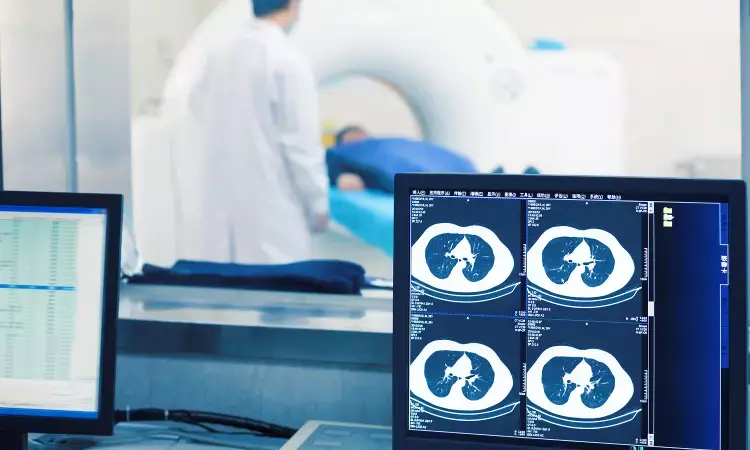- Home
- Medical news & Guidelines
- Anesthesiology
- Cardiology and CTVS
- Critical Care
- Dentistry
- Dermatology
- Diabetes and Endocrinology
- ENT
- Gastroenterology
- Medicine
- Nephrology
- Neurology
- Obstretics-Gynaecology
- Oncology
- Ophthalmology
- Orthopaedics
- Pediatrics-Neonatology
- Psychiatry
- Pulmonology
- Radiology
- Surgery
- Urology
- Laboratory Medicine
- Diet
- Nursing
- Paramedical
- Physiotherapy
- Health news
- Fact Check
- Bone Health Fact Check
- Brain Health Fact Check
- Cancer Related Fact Check
- Child Care Fact Check
- Dental and oral health fact check
- Diabetes and metabolic health fact check
- Diet and Nutrition Fact Check
- Eye and ENT Care Fact Check
- Fitness fact check
- Gut health fact check
- Heart health fact check
- Kidney health fact check
- Medical education fact check
- Men's health fact check
- Respiratory fact check
- Skin and hair care fact check
- Vaccine and Immunization fact check
- Women's health fact check
- AYUSH
- State News
- Andaman and Nicobar Islands
- Andhra Pradesh
- Arunachal Pradesh
- Assam
- Bihar
- Chandigarh
- Chattisgarh
- Dadra and Nagar Haveli
- Daman and Diu
- Delhi
- Goa
- Gujarat
- Haryana
- Himachal Pradesh
- Jammu & Kashmir
- Jharkhand
- Karnataka
- Kerala
- Ladakh
- Lakshadweep
- Madhya Pradesh
- Maharashtra
- Manipur
- Meghalaya
- Mizoram
- Nagaland
- Odisha
- Puducherry
- Punjab
- Rajasthan
- Sikkim
- Tamil Nadu
- Telangana
- Tripura
- Uttar Pradesh
- Uttrakhand
- West Bengal
- Medical Education
- Industry
Chest CT findings may help predict outcomes of SBRT in stage I lung cancer

Leesburg: Imaging findings on chest CT conducted before a patient undergoes stereotactic body radiation therapy (SBRT) for stage I lung cancer may help predict treatment outcome. Noncancerous imaging markers on chest CT performed before stereotactic body radiation therapy (SBRT) improve survival prediction, compared with clinical features alone, finds a new study.
The study has been published in the American Journal of Roentgenology (AJR).
"In patients undergoing SBRT for stage I lung cancer," explained corresponding author and 2019 ARRS Scholar Florian J. Fintelmann, "higher coronary artery calcium (CAC) score, higher pulmonary artery (PA)-to-aorta ratio, and lower thoracic skeletal muscle index independently predicted worse overall survival."
Fintelmann and team's retrospective study included 282 patients (168 female, 114 male; median age, 75 years) with stage I lung cancer treated with SBRT between January 2009 and June 2017. To quantify CAC score and PA-to-aorta ratio, as well as emphysema and body composition, pretreatment chest CT was used. Associations of clinical and imaging features with overall were quantified using a multivariable Cox proportional hazards (PH) model.
For stage I lung cancer patients treated with SBRT, CAC score, PA-to-aorta ratio, and skeletal muscle index showed significant independent associations with overall survival. (p<.05). The model including clinical and imaging features demonstrated better discriminatory ability for 5-year overall survival than the model including clinical features alone (AUC 0.75 vs. 0.61, p<.01).
For further information, click on this link:
Dr Kamal Kant Kohli-MBBS, DTCD- a chest specialist with more than 30 years of practice and a flair for writing clinical articles, Dr Kamal Kant Kohli joined Medical Dialogues as a Chief Editor of Medical News. Besides writing articles, as an editor, he proofreads and verifies all the medical content published on Medical Dialogues including those coming from journals, studies,medical conferences,guidelines etc. Email: drkohli@medicaldialogues.in. Contact no. 011-43720751


